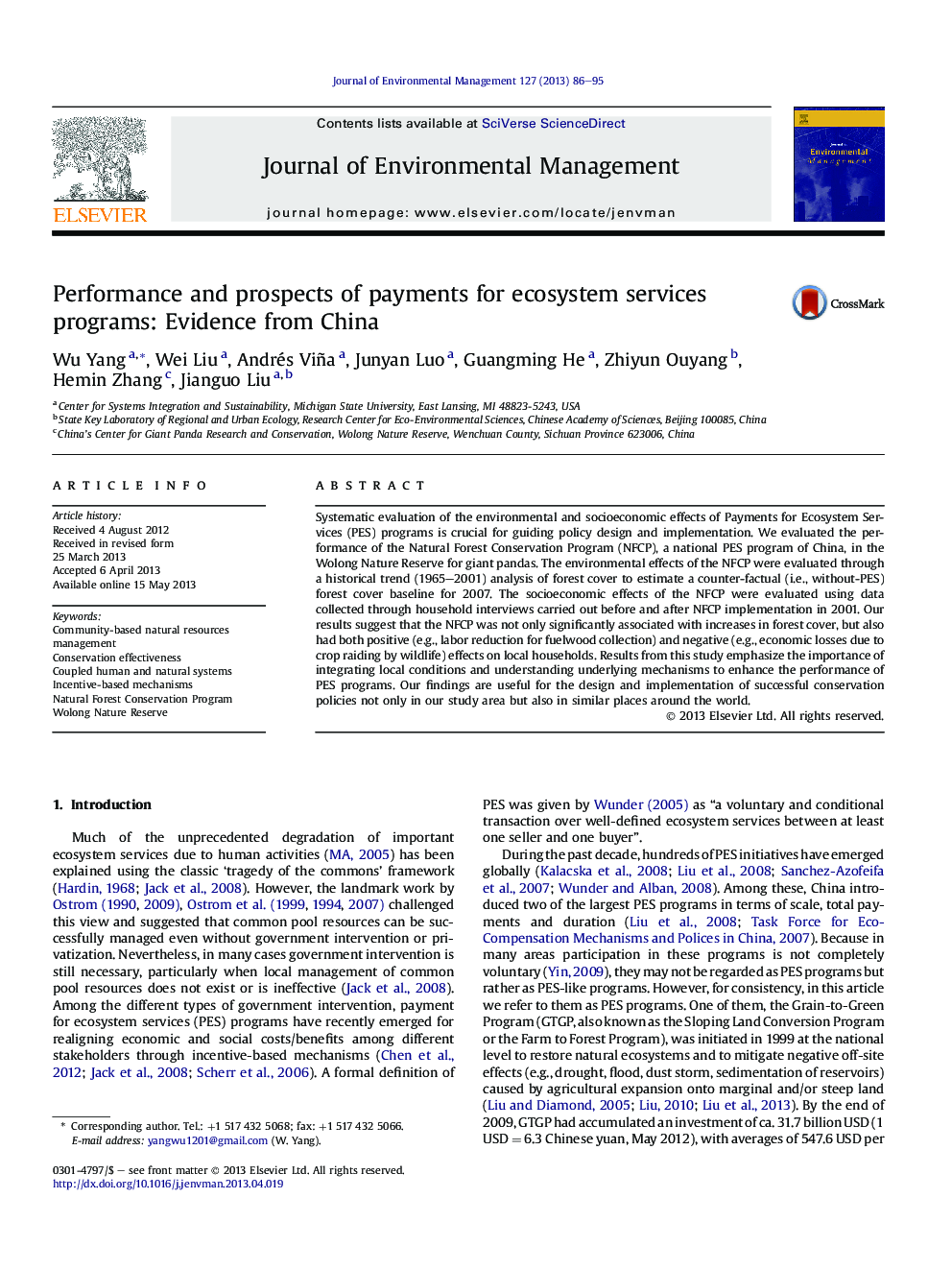| Article ID | Journal | Published Year | Pages | File Type |
|---|---|---|---|---|
| 1056010 | Journal of Environmental Management | 2013 | 10 Pages |
•We assessed environmental and socioeconomic effects of a PES program in China.•We used a historical trend to estimate the counter-factual without-PES baseline.•The PES program led to mixed environmental and socioeconomic effects.•Integrating local conditions enhances the performance of PES programs.•Understanding mechanisms of successful practices is essential for policy-making.
Systematic evaluation of the environmental and socioeconomic effects of Payments for Ecosystem Services (PES) programs is crucial for guiding policy design and implementation. We evaluated the performance of the Natural Forest Conservation Program (NFCP), a national PES program of China, in the Wolong Nature Reserve for giant pandas. The environmental effects of the NFCP were evaluated through a historical trend (1965–2001) analysis of forest cover to estimate a counter-factual (i.e., without-PES) forest cover baseline for 2007. The socioeconomic effects of the NFCP were evaluated using data collected through household interviews carried out before and after NFCP implementation in 2001. Our results suggest that the NFCP was not only significantly associated with increases in forest cover, but also had both positive (e.g., labor reduction for fuelwood collection) and negative (e.g., economic losses due to crop raiding by wildlife) effects on local households. Results from this study emphasize the importance of integrating local conditions and understanding underlying mechanisms to enhance the performance of PES programs. Our findings are useful for the design and implementation of successful conservation policies not only in our study area but also in similar places around the world.
